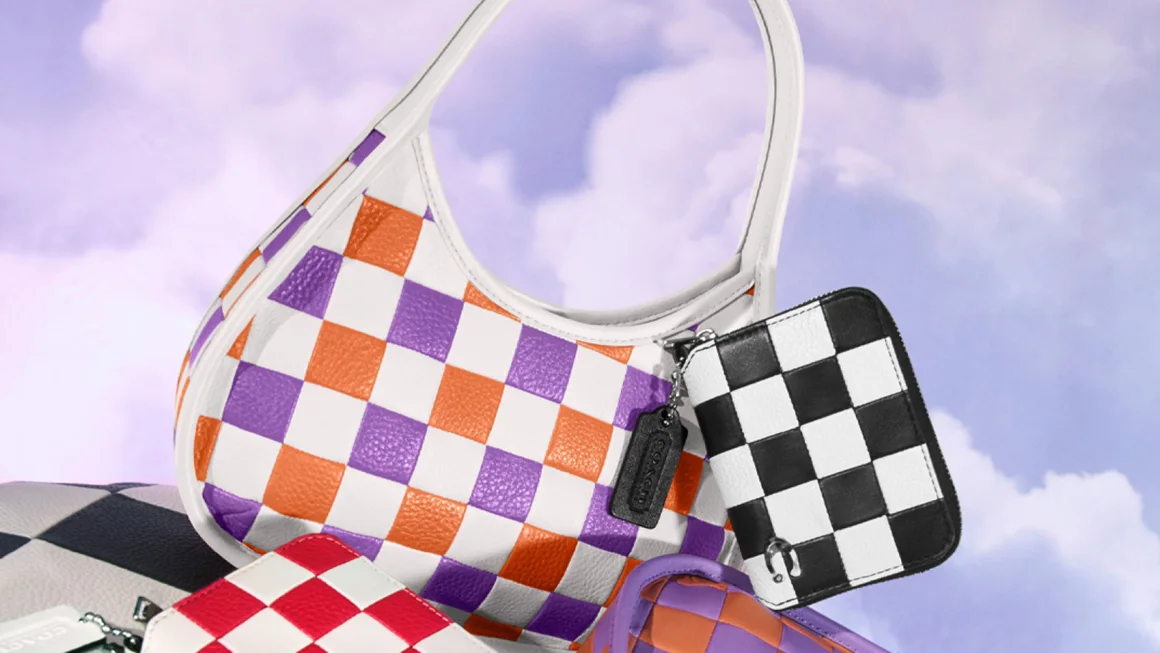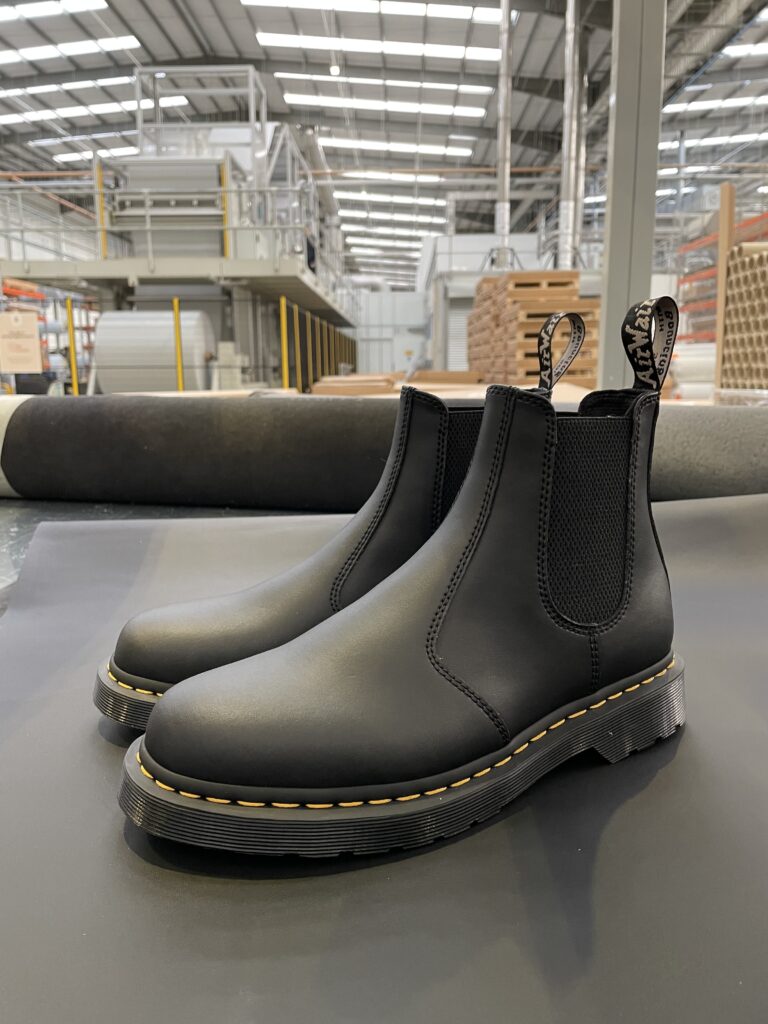
Eco-friendly fashion has made amazing strides, from swimsuits made from recycled materials to accessories that use sustainable leather alternatives. These new forms of leather are often labeled as “vegan leather,” but experts say you should look carefully at the materials tag. Vegan leather isn’t inherently sustainable, so it’s important to be able to see through the greenwashing.
“Vegan leather, often made from plastics, poses a problem because these materials take years to break down and can release harmful toxins into the environment, making them worse for the planet than regular leather,” says Uyen Tran, founder and CEO of bio-based material manufacturer TômTex. “Despite the ‘vegan’ label, cleverly masking plastic origins, many people don’t realize the environmental consequences of their choice.”
Thankfully, there has been tons of innovation in sustainable leather alternatives, introducing materials that are actually vegan and good for the environment.
What is vegan leather?
You’ll see plenty of vegan leather handbags and accessories from fast-fashion brands and luxury labels alike, but these only muddy the waters of sustainable living. John Kennedy, CEO of sustainable leather manufacturer Gen Phoenix, points out that vegan by definition means “animal-free,” but there can be both sustainable and unsustainable versions of animal-free products.
“We feel that ‘vegan’ is a confusing term when applied to leather alternatives. In this context, the word vegan is synonymous with synthetic, so we should be discussing synthetic leather alternatives,” Kennedy says “The term can be misleading to consumers who are likely to associate ‘vegan’ with a plant-based or natural material.”
Oftentimes, vegan leather is an alias for PVC, made from polyvinyl chloride and plasticizer phthalates. “These chemicals can pose risks to health, causing hormone disruption, developmental issues and reproductive problems,” Tran says. “In fact, PVC is considered one of the worst types of plastic due to its environmental impact.”
To avoid this toxic material that’s hiding in plain sight, it’s important to vet the brands you’re shopping. Transparency around materials and manufacturing is important, and brands that are proud of their steps toward sustainability will outline these clearly, gain certifications that validate their efforts and won’t hide behind general, greenwashing lingo.
For example, Melissa O de León, Cascale senior manager, Higg Product Tools, explains that the Higg Materials Sustainability Index and Higg Product Module “[help] users understand the cradle-to-grave environmental impacts of different materials — including plant-based or synthetic leather alternatives, and recycled leather — and how processing decisions can change those impacts.” It counts half of the apparel supply chain as its members.
What are sustainable leather alternatives?
Today, there are a number of sustainable leather alternatives. Some are completely plant based, while others recycle real leather into a new material.
Tran says to look for 100% bio-based or 100% plant-based leather alternatives that are free from plastic and petrochemicals. At TômTex, Tran has worked on Series M, a plant-based material made from mushrooms, and Series WS, made from waste shrimp shells.
Other bio-based alternatives on the market include Piñatex, made from fibers from the pineapple plant, natural rubber-based Mirum and upcycled apple skin.
Meanwhile, Gen Phoenix has pioneered circularity in leather manufacturing, creating a material with recycled leather fibers and reducing the overall waste. According to Kennedy, this material, called Genix Nappa, has a lower carbon impact than genuine leather too.

Are leather alternatives more eco-friendly than genuine leather?
According to the experts, there’s a lot of nuance in what makes a leather alternative sustainable. Opting for a plastic-free vegan leather is trickier said than done. “Not all plastic is created equal. In some cases, the plastic element of a product is engineered to have a specific purpose, lending to the overall longevity and performance of the end product,” Kennedy says.
Not all leather is created equal either. “While some leather manufacturing processes may have environmental consequences such as deforestation, greenhouse gas emissions and water pollution, other manufacturers source from gold-rated tanneries that prioritize traceability and more environmentally conscious practices,” Kennedy says. “On the other hand, synthetic leather is typically made from plastics, so while it doesn’t use any animal products, it does contain a high amount of plastic content, which can have challenges from a biodegradability perspective.”
Plus, you’ll likely find plastic in the leather manufacturing process too. “The truth is, many textile manufacturers, even leather manufacturers, use plastic in at least part of their production, whether it’s the finish of the material or an integral part of the material makeup,” Kennedy explains.
O de León also notes the difficulty in cross-material comparisons, explaining that you have to take into account the different stages of production, from the supply chain to the manufacturing. Some areas of the process may be more beneficial than others. “For example, using a recycled polyethylene terephthalate (PET) substrate versus a virgin one offers a significant benefit, but only in the raw material stage,” she says.
When weighing the decision to shop a leather alternative versus real animal hide, the most sustainable choice at the consumer stage may come down to longevity. “Unfortunately, today there are no out-of-the box solutions for consumers to understand the impact of a garment. However, investing in their own education regarding sustainability in fashion is one of the most important steps that they can take,” O de León says. “This could include reflecting on the consumption phases of buying, use and end of life, which have an influence on the impact of a garment.”
Kennedy adds, “At the end of the day, synthetic leather and bio-based leather alternatives are still producing more new ‘stuff,’ which adds to the environmental impact of manufacturing a new material. And if they aren’t designed to be durable, they are more likely to end up in landfill.”
What brands offer sustainable leather alternatives?
From independent startups to designer labels, there are a growing number of fashion brands turning to sustainable leather alternatives for handbags, shoes and other products.
However, the reality is that investing in the production of new leather alternatives is expensive for brands and consumers. “In some cases, technology innovators have had to halt production due to an inability to cross the chasm from lab to commercial scale,” Kennedy says.
“A sustainable material can only scale if it also meets the quality, price and performance that consumers expect from heritage leather manufacturers,” he adds. “While increasingly buyers are prioritizing brands that offer sustainable options, it’s also true that consumers aren’t willing to give up the craftsmanship and performance they have come to expect from leather.”
In order to make these high-performing eco materials a reality, it doesn’t hurt to be demanding. “Holding brands and producers accountable for more transparency will bolster consumers’ ability to evaluate a brand’s level of sustainability at face value rather than relying on marketing claims that can be misleading or inaccurate,” Kennedy explains. “It’s an important step to level the playing field and recognize the brands already making progress, as well as requiring more to walk the talk.”
With that, let’s take a look at nine brands that are making strides with sustainable leather alternatives.

Dr. Martens and Gen Phoenix teamed up for a line of hero styles reimagined in the new reclaimed leather material. “Genix Nappa is redefining strength by giving wearers a more sustainable alternative to traditional leather,” Kennedy says. “The new material has a lower carbon impact than traditional leather and is specially engineered to make sure it’s just as durable, comfortable and long-lasting as the original brand icons we know and love.”

“In my opinion, Matt & Nat is one of the best brands in the faux leather market,” says Cornelia Guest, actress, designer and cruelty-free fashion advocate. “They’ve been committed to using recycled materials, a clean aesthetic and keeping prices affordable from the beginning … Eco-friendly and cruelty-free shouldn’t cost an arm and a leg.”
This convertible bag is part of the brand’s Purity collection, which is made with recycled materials.

Created with upcrafted leather (meaning it’s made from at least 40% recycled or repurposed leather that was otherwise heading for the landfill), this handbag reduces waste and promotes circularity. Its production adheres to the brand’s Made Circular principles, which outlines ways the bag’s materials can be reused or recycled in the future.


